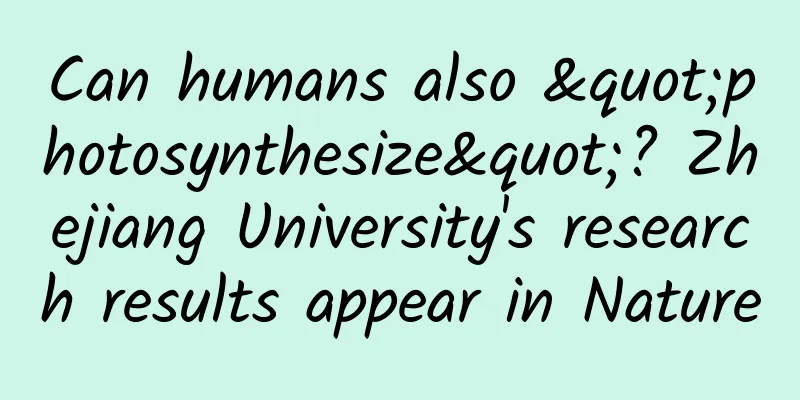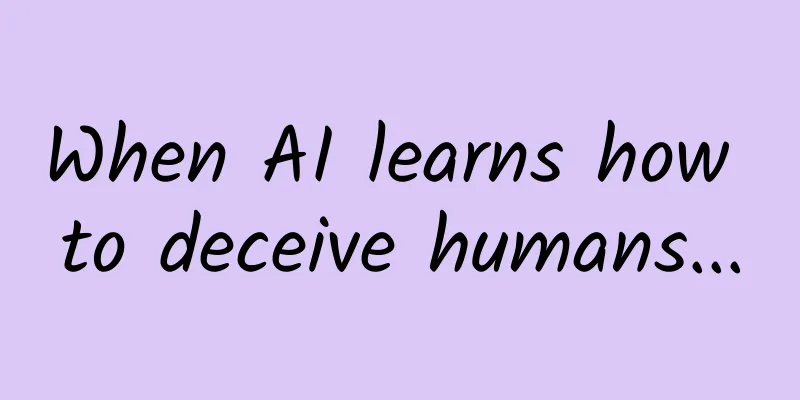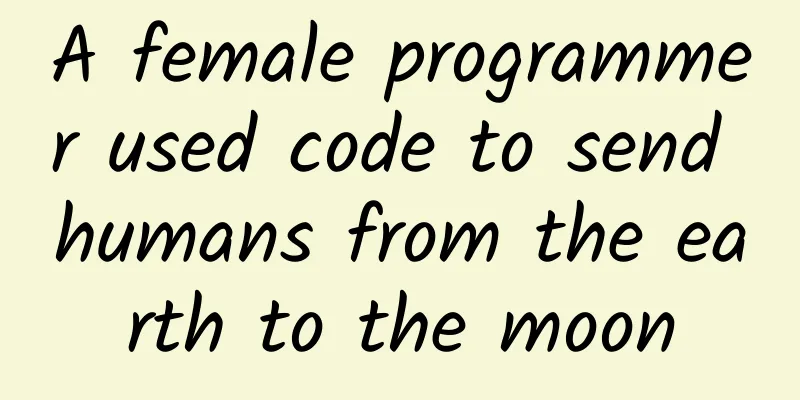Can humans also "photosynthesize"? Zhejiang University's research results appear in Nature

|
Spinach, once left deep childhood memories for many people born in the 70s and 80s because of the cartoon image of "Popeye". Nowadays, in addition to appearing on our tables every day, scientists have truly given it the expectation of "infinite power". Dr. Lin Xianfeng and Professor Fan Shunwu's team from the Department of Orthopedics of the Run Run Shaw Hospital affiliated to the School of Medicine of Zhejiang University and Professor Tang Ruikang's team from the Department of Chemistry of Zhejiang University successfully extracted the "biobattery" with photosynthesis - thylakoids from spinach, and through precise preparation technology, for the first time in the world, the cross-species delivery of plant thylakoids to the aging and diseased cells of animals was achieved , allowing animal cells to also have the energy of plant photosynthesis, thereby knocking on the "door of time" to reverse cell degeneration and aging. On December 8, Beijing time, this original scientific research result was published in the form of a long article in the top international journal Nature. The first author of the paper is Dr. Chen Pengfei, Distinguished Researcher Liu Xin and Doctoral Student Gu Chenhui from the Run Run Shaw Hospital affiliated to Zhejiang University School of Medicine; the corresponding author is Distinguished Researcher/Attending Physician Lin Xianfeng of the Orthopedics Department of the Run Run Shaw Hospital affiliated to Zhejiang University School of Medicine, Professor Fan Shunwu and Professor Tang Ruikang of the Department of Chemistry of Zhejiang University. "Following the laws of nature, innovatively breaking through the world's difficult problem of delivering energy to cells, and opening up the possibility of metabolic engineering." Senior editors and reviewers of Nature magazine highly praised the latest research results of the Zhejiang University research team. According to reports, the most exciting part of this research is that the team has developed a cell membrane nano-coating technology , which encapsulates mammalian cell membranes on the outer layer of nano-sized plant thylakoids, and cleverly transplants plant thylakoids into mammalian cells through cell membrane camouflage encapsulation, successfully unlocking the "code" of energy transfer between species, achieving specific energy supply, and verifying it in the treatment of degenerative osteoarthritis. Making good use of the wisdom of plants over billions of years Recharging animal cells As disease research progresses, more and more studies have found that insufficient energy in animal cells is a key cause of tissue aging and the development of degenerative diseases. Just as humans need to supplement nutrition three times a day, cell renewal metabolism also requires energy and material supply, and ATP and NADPH are the indispensable energy and material currencies for cell regeneration and repair. However, providing direct energy and material to degenerative cells is a huge scientific problem. Lin Xianfeng proposed a concept: "Can we design a 'charging' device to controllably generate ATP and NADPH in cells?" The brainstorming triggered by the cross-discussion between the two research groups of medicine and chemistry has opened up a new world of research. However, scientists have made great efforts to synthesize ATP and NADPH using biomaterials, but how to make cells "accept" such an external device and accurately regulate the concentration of ATP and NADPH has always been a world-class problem in this field. Based on the long-term cultivation of the orthopedic research team of Zhejiang University Run Run Shaw Hospital in the field of biomaterials, the chemical biology research ideas of "materials regulating biology" and the concept of "artificial organelles" of Tang Ruikang's team of the Department of Chemistry, the team keenly turned its attention to the magical nature - in nature, plants and animals form a perfect complementary relationship. Plants produce oxygen and sugar by absorbing carbon dioxide, while animals do the opposite. Can this macro complementary relationship be extended to the cellular level, and by implanting "photosynthetic organelles", the energy supply system of plants can become a "biological battery" for animal cells to replenish energy? "I searched for her everywhere, but when I turned around, she was there, in the dimming lights." Over billions of years, plants have evolved a nearly perfect energy supply organelle - the thylakoid, which is an energy factory that can controllably and stably generate ATP and NADPH. The research team chose spinach, which is eaten every day, the greenest in the vegetable market, and is also more common in the field of plant metabolism research, as the raw material. After unremitting efforts, they successfully extracted and purified the thylakoid components in the green leaves of spinach. Lin Xianfeng (left) and Chen Pengfei (right) discussing their experiments Cross-species delivery achieved for the first time Perfect regeneration and repair is not a dream The "battery" for replenishing energy is ready, but where is the "interface"? How to safely and accurately deliver thylakoids to the aging and degenerated cells of animals has become a huge problem that restricts the research team from applying it to the medical field. For a long time, research on cross-species delivery of bioactive components has been slow. In particular, the human body has a complex immune system, and various immune cells, mainly macrophages, will actively identify and phagocytose foreign matter, and then digest it through lysosome degradation. How can we overcome the interspecies barrier? Team member Chen Pengfei tried a variety of delivery methods, such as liposome encapsulation, but never achieved the desired effect. "How about using the cell's own cell membrane for encapsulation? Using the principle of homologous targeting, we can make the cell think that the thylakoids we deliver are 'their own', thereby avoiding immune rejection in the body and achieving cross-border cell transplantation of nano-plant thylakoids." With bold assumptions and careful verification, under the constant encouragement of Fan Shunwu and Tang Ruikang and the inspiration of Lin Xianfeng, after some exploration, the team successfully used cell membranes to "disguise" the nanothylakoids and achieved the intracellular delivery of nanothylakoids. "The escape of exogenous biomaterials from lysosomes is an important step in achieving successful delivery. Through various endocytosis inhibition experiments, we have repeatedly verified that animal cells no longer clear nanothylakoids as 'foreign matter', making them a part of them." Liu Xin added that this means that the research team has mastered the "black technology" to delay the degeneration and aging of animal cells. Schematic diagram of the mechanism of action of this study The application areas are immeasurable First to achieve a breakthrough in osteoarthritis treatment What specific key role do nanothylakoids play in cells? During the publication of this research result, four top international reviewers from disciplines such as biomaterials, cell metabolism, and clinical medicine provided the team with a series of suggestions and improvements around this core issue. After more than a year of solid experiments and test analysis, the team verified through a variety of interdisciplinary technical means that nano-thylakoids can retain the proteins and other functional monomers required for photosynthesis on the thylakoids, maintain sufficient action time and degradation stability, and ensure the production of sufficient ATP and NADPH, thereby systematically reversing the metabolic state of diseased cells. "The verification process involves sophisticated modeling and calculations, especially for analyzing the production of ATP and NADPH and their exact action concentration levels, which gives us a new understanding of the research results." Gu Chenhui said. How much effect can this exciting nanothylakoid "black technology" have in the body? This is the question that top international reviewers from different disciplines are most concerned about during the entire review process. In order to test whether this type of "biobattery" can reverse the metabolic state of diseased cells, the team first selected the disease model of osteoarthritis to conduct "conceptual verification" of this type of "biobattery". Osteoarthritis is one of the main causes of malformation and disability in clinical practice. It is precisely because of the imbalance of energy metabolism of chondrocytes and the depletion of ATP and NADPH that lead to the destruction of articular cartilage. At present, the biological treatment of osteoarthritis cannot systematically correct the metabolic imbalance of damaged and degenerated chondrocytes, so the clinical prognosis is poor. Fan Shunwu led the research team for more than a year, constantly seeking various interdisciplinary technical means, and systematically verified that the nanothylakoids encapsulated by the chondrocyte membrane can not only effectively evade the clearance of the immune system, but also be selectively taken up by the degenerated chondrocytes. Through in vitro non-invasive light therapy, the ATP and NADPH levels in the degenerated chondrocytes can be precisely enhanced and sufficient "endurance" can be maintained, thereby reshaping the anabolism of chondrocytes and achieving the treatment of degenerative osteoarthritis. Schematic diagram of light-stimulated chondrocytes Innovation and R&D have a promising future George Caputa, senior editor of Nature, commented: "How to deliver energy to cells has always been a huge problem in cell biology and clinical medicine, and achieving the correct replenishment of specific metabolite levels is a persistent challenge in clinical treatment. What better way to solve the above problems than to deliver the factory that has evolved over billions of years of life - thylakoids?" Professor Francisco Cejudo, a reviewer of the paper, said: "The outstanding thing about this work is that the research team has successfully transplanted plant 'micro-organelles' into mammalian cells. This technology of using the plant photosynthesis system to specifically supply ATP and NADPH in mammalian cells in a light-dependent manner is an exciting achievement that opens up the possibility of metabolic engineering." In the same period, Nature published the article “Plant cell device enables transfer of metabolites to mammalian cells” in the “Research briefing” column, which publicized and positively evaluated the research results. Tang Ruikang said: "This study demonstrates the biomedical application of cross-species transplantation of thylakoids from natural plants into mammalian cells. The key raw materials of this study are derived from natural plants and have high biosafety. At the same time, the cell membrane nanocoating technology has the potential for large-scale production. This innovative technology is expected to be applied in the fields of medicine, energy, materials, etc. in the future." Fan Shunwu's team said: "The success of this research is due to the atmosphere of free exploration in the hospital, the unanimous support of the school, colleges, hospitals and departments, and the funding from the National Natural Science Foundation and the National Key R&D Program of the Ministry of Science and Technology." It is reported that the team has long been deeply engaged in the research on the mechanism of degenerative diseases of the musculoskeletal system and the development and research of biomaterials from natural sources, and has been boldly trying interdisciplinary research. A series of high-impact research results have been published in authoritative journals such as Nature, Matter, Developmental Cell, Nature Communications, Science Advances, and JACS, realizing the application of new clinical technologies for various common and difficult diseases such as spine, joints, bone trauma, and wound repair, and deeply practicing "applying technology to clinical practice and writing papers on the land of the motherland." At present, the research team has simultaneously submitted invention patents and started product transformation. |
<<: Antigen test is "positive"! Just because I ate an orange?
>>: Parents often do these 5 things, but they are extremely dangerous!
Recommend
Do cockroaches no longer like sweets?
When you pick up the dirty laundry basket in the ...
Office Winner: High Emotional Intelligence Communication 10 Lectures
"Office Winner: 10 Audio Lectures on High Em...
Just a mini-game? When you know this, do you still dare to say that video games are simple?
For players who often play games on PC, mobile ga...
Entry-level high-defense server rental costs, low-cost high-defense servers
The high-defense server is used to defend the web...
These 30 copywriting sentences are worth 30,000
Different classic copywriting has the same senten...
Trump supporters launch campaign against Musk, Tesla and SpaceX
Recently, according to foreign media reports, a r...
Operational promotion: How to increase active users?
Having a growing pool of active users is the ulti...
Learn about the ad display process and cache mechanism in one article
As mobile Internet has developed, user time has b...
Following the light: He uses "photon imaging" to illuminate the biological world!
Fireflies are always an indispensable part of sum...
Detailed explanation of Tik Tok information flow delivery strategy!
Nowadays, more and more companies and projects ar...
How to improve ROI? Internet marketing combination methodology!
This article will focus on the general Internet m...
Machine Learning VS Numerical Weather Forecasting, How Does AI Subvert the Weather Forecasting Model?
Numerical weather forecasting is the mainstream m...
Is the agency fee for Jixi Points Mini Program high? Jixi Points Mini Program Agency Fees and Process
Is it easy to be an agent of Jixi Points Mini Pro...
Cook said Apple would survive for a thousand years, but Jobs would never say that
Last year, Cook publicly envisioned the future of...
Cool fact: The cotton swab used for nucleic acid testing is not actually a cotton swab!
Audit expert: Gu Haitong Deputy Chief Physician, ...









